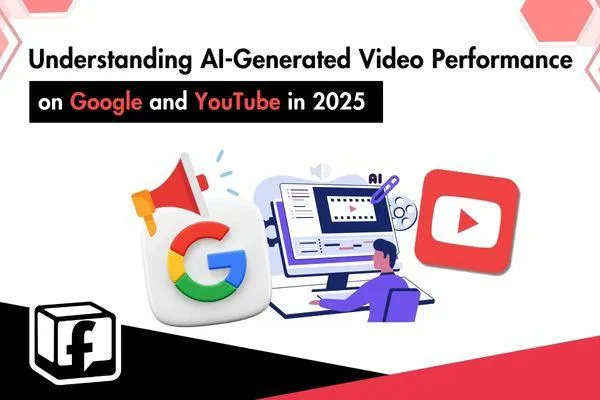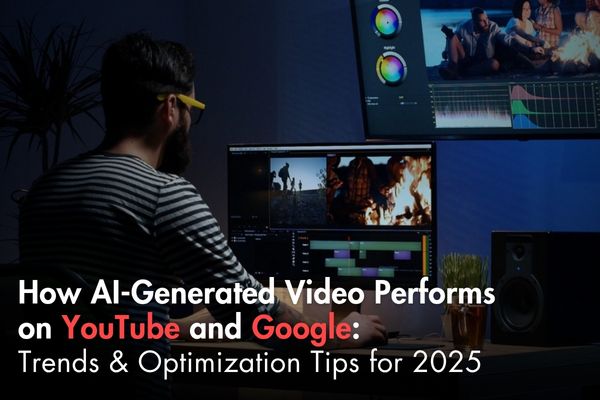
Understanding AI-Generated Video Performance on Google and YouTube in 2025

How AI-Generated Video Performs on YouTube and Google: Trends & Optimization Tips for 2025
The Rise of AI-Generated Video Content
In 2025, AI-generated videos have gone mainstream. With tools like Runway, Pika, and Google’s own Gemini AI, content creators and marketers are now producing short-form, explainer, and promotional videos in minutes—without filming anything.
But how do these AI videos perform on Google Search and YouTube? Are they ranking well, engaging users, and driving traffic? This article explores how AI video content is received by Google's algorithms and YouTube’s recommendation system, and how you can optimize it for success.
1. How Google Ranks AI-Generated Videos in Search
Google’s search algorithm in 2025 uses multimodal understanding, meaning it evaluates the video’s transcript, metadata, and contextual relevance. AI-generated videos that are:
Informative
Clear in intent
Well-labeled with structured data
…tend to perform well in video carousels and featured snippets.
Optimization Tip:
Add schema markup (e.g., VideoObject), create detailed video descriptions, and use relevant AI video content SEO keywords in your titles and thumbnails.
2. Performance of AI Videos on YouTube
YouTube’s algorithm in 2025 is content-focused, not creator-biased. That means AI-generated videos are judged based on:
Viewer retention
Click-through rate (CTR)
Engagement (likes, comments, shares)
If the video resonates—even if AI-made—it ranks and gets recommended just like traditional videos.
YouTube AI Video Optimization Tips:
Use AI voiceovers that sound natural.
Ensure visuals align with the topic (e.g., no off-topic stock clips).
Include a compelling hook in the first 10 seconds.
Add chapters for long-form AI explainer videos.
3. Engagement Metrics: What Really Matters
Both Google and YouTube heavily weigh engagement signals. For AI video engagement metrics, focus on:
Average watch time
Return viewers
Audience interaction
Even with AI-generated content, authenticity and clarity are key. Poorly produced or overly robotic videos tend to have higher bounce rates, which hurts visibility.
4. Are AI Videos Penalized or Prioritized?
Google has confirmed that AI-generated content is not penalized as long as it meets quality standards. In fact, well-executed AI videos can outperform low-quality human-made content.
On YouTube, many channels are gaining traction with daily AI-generated explainers, tutorials, or news recaps. What matters most is value to the viewer—not whether a human or machine made it.
5. Marketing Strategy: Where to Use AI-Generated Videos
Use AI-generated video content for:
SEO-rich YouTube videos (How-to, Listicles)
Product explainer videos on landing pages
YouTube Shorts for trend jacking
Video ads for Google Display Network
Social media teasers linking back to your site or YouTube
Make sure each video is branded, provides context, and links back to relevant content.
Conclusion:
AI-generated video is here to stay, and both Google and YouTube are adapting to support it. These videos can perform exceptionally well—if they’re optimized for search intent, viewer engagement, and structured metadata.
Treat AI tools as a creative assistant, not a shortcut. Combine smart AI video creation with strong marketing principles, and you’ll have a powerful strategy for visibility in 2025 and beyond.
How Ads with Finesse Can Help You
At Ads with Finesse, we specialize in crafting ad campaigns that highlight the best customer experiences, ensuring your audience connects with your brand on an emotional level. Our team carefully selects authentic, high-impact reviews and seamlessly integrates them into your ad strategy.
Learn more about our services today and turn your Google Marketing into your most powerful marketing tool with Ads with Finesse.
Let’s create ads that resonate, convert, and build trust.
Check out our blog and services at adswithfinesse.com.